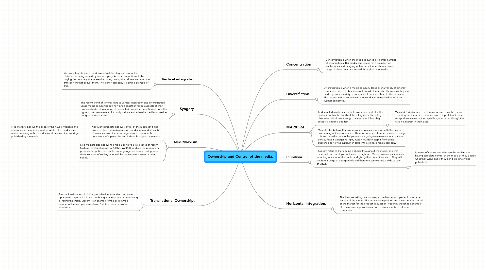Ownership and Control of the media.
by Jake Taylor


1. Vertical integration
1.1. Vertical integration is a trend towards all the stages in production, distribution being owned by one company. An example of it would be buying the company that make the paper, buying the printers and then the transporters that deliver them. The disney company is a prime example of this.
2. Transnational Ownership.
2.1. Transnational ownership is like globalisation, whereby companies operate on a global market so are being advertise and are producing all round the world. Viacom is an example of this as it owns a number of film companies and over 150 television networks worldwide.
3. Syngery
3.1. The recent trend of synergy links to vertical integration and diversification. Large media companies can now bring together various aspects of their business to develop a range of connected products. Time Warner owns the rights to batman meaning it could produce and advertise the film as well as bring out merchandise.
4. Neo Marxism
4.1. Neo Marxist update believe control of the media isn't just down to class it also depends on gender, age and ethnicity. Neo marxists use the term Hegemony to describe the dominance of a particular set of ideas throughout the media.
4.1.1. Neo Marxists believe the people who have ownership and control over the media are often white, old, middle class males, meaning only their ideas and views on the world get published by the media.
4.2. Neo Marxists also believe the media portrays a false sense of reality. Such as Faircloughs study of CRIME WATCH in which the programme presents the police and public working together as one, but ignores those sections of society who feel the police do not attend to their needs.
5. Concentration
5.1. Concentration is when the media is owned by a small number of organisations. Bid media companies have been buying smaller ones and merging with others, this leads to a narrow range of views being expressed throughout the media.
6. Horizontal integration.
6.1. This involves taking over or merging with other companies in the same section of the media. The reduces competition and gives greater control of the market for the product in question. Rupert Murdoch is a example of this as his company; News Corp owns a variety of different companies.
7. Diversifiction
7.1. Diversification is when a media company takes over a variety of different companies and even branches out outside the media. This means they are made up from a variety of companies from a number of different areas. The biggest media company in the world was merged when AOL and Warner combined.
8. MARXISM
8.1. Traditional Marxists believe that power and control in the media lie within the hands of the ruling class. The ruling class asserts it's ideas through the media which society accepts as normal and fair.
8.1.1. Miliband (1969) argues that the ruling class uses the media to portray capitalism in a positive way. The proletariat then accept these values of the capitalist system even though the have no interest in their class.
8.2. Marxists also believe that owners of companies intervene with the day to day running of their companies. There is evidence of Rupert murdoch doing this, such as when one of his papers were going to release a story on china portraying it in a negative light, Rupert murdoch stop it from being published as he was currently in talks with a chinese media company.
9. Pluralism
9.1. Pluralism refers to there being a choice throughout the media, and that there isn't one ideology published throughout. Media professional are seen as acting in favour of the public and giving them what they want. They will be from a range of backgrounds and therefore can express a wide variety of views.
9.1.1. In terms of control pluralists see the audience as having complete control of the media as they decide what they want, and if they don't like it won't be published.
